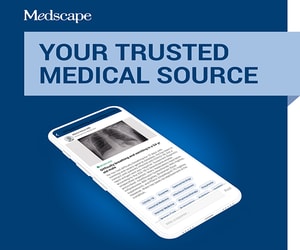Question
What do the latest guidelines recommend for the treatment of acute bacterial rhinosinusitis? I'm looking for information on specific treatment guidelines recommended for both adults and children.
Response from Judith Shannon Lynch, MS, MA, APRN-BC, FAANP
An earlier Ask the Expert response, "What Are the New Guidelines for Management of Bacterial Rhinosinusitis?" addressed the importance of the 2004 Sinus and Allergy Health Partnership guidelines for the diagnosis and treatment of acute bacterial rhinosinusitis (ABRS).[1] This response will focus on specific treatment guidelines recommended by this expert panel for both adults and children.
When selecting an appropriate antibiotic for treatment of this common upper respiratory health problem, providers must address disease severity and progression as well as recent antibiotic exposure. Patients with ABRS are divided into 2 specific groups:
Patients with mild disease who have not received any antibiotics within the past 4-6 weeks
Patients with mild disease who have received antibiotics within the past 4-6 weeks and patients with moderate disease, regardless of recent antibiotic exposure[2]
The authors stress that the guidelines must be used with the following caveats:
Terms mild and moderate emphasize degree of patient discomfort as an important factor in the decision-making process
Patients do not always fit into neat categories, and clinical judgment is always important
Difference in disease severity does not imply infection with a resistant pathogen
Life-threatening infection is not discussed
Recent antibiotic exposure is important as it increases the risk for infection with resistant organisms
Antibiotic allergies and age limitations also affect treatment choices
For children, the child's age and attendance in daycare must be considered[3]
Response from Judith Shannon Lynch, MS, MA, APRN-BC, FAANP
The guidelines rank antibiotics in a relative order of predicted clinical efficacy:
90% to 92% rate of efficacy:
Respiratory quinolones: gatifloxacin, levofloxacin, and moxifloxacin (note that ciprofloxacin has no place in the treatment of ABRS)
Ceftriaxone
High-dose amoxicillin-clavulanate
83% to 88% rate of efficacy:
High-dose amoxicillin
Trimethoprim/sulfamethoxazole
Cephalosporins -- cefuroxime axetil, cefdinir, and cefpodoxime proxetil
77% to 81% rate of efficacy:
Doxycycline
Clindamycin
Macrolides -- azithromycin, clarithromycin, and telithromycin (a ketolide)
65% to 66% rate of efficacy:
Cefaclor
Loracarbef
Recommendations for initial therapy for adult patients with mild disease (and no previous antibiotic use) include:
Amoxicillin-clavulanate (875 mg twice daily)
High-dose amoxicillin (1 g twice daily)
Cefpodoxime proxetil (200 mg twice daily)
Cefuroxime axetil (500 mg twice daily)
Cefdinir (300 mg twice daily)
Failure to respond to antimicrobial therapy after 72 hours will prompt a switch to alternate therapy and/or patient reassessment. Agents to be considered include the respiratory quinolones or ceftriaxone.
Recommendations for initial therapy for adults with mild disease who have taken antibiotics within the past 4-6 weeks and with moderate disease include:
Respiratory quinolones
Gatifloxacin (400 mg daily)
Levofloxacin (750 mg daily)
Moxifloxacin (400 mg daily)
High dose amoxicillin-clavulanate (Augmentin XR 2 tablets twice daily x 10 days)
Ceftriaxone (1-2 g/day x 5 days by IM injection only)
Duration of treatment should be at least 14 days unless specified above.
Response from Judith Shannon Lynch, MS, MA, APRN-BC, FAANP
The guidelines rank antibiotics for children with ABRS in the following relative order of efficacy:
91% to 92% rate of efficacy:
Ceftriaxone
High-dose amoxicillin-clavulanate
Amoxicillin-clavulanate
82% to 87% rate of efficacy:
High-dose amoxicillin
Amoxicillin
Cefpodoxime proxetil
Cefixime
Cefuroxime axetil
Cefdinir
Trimethoprim/sulfamethoxazole
78% to 80% rate of efficacy:
Clindamycin
Cefprozil
Azithromycin, clarithromycin
67% to 68% rate of efficacy:
Cefaclor
Loracarbef
Recommendations for initial therapy for children with mild disease and no previous antibiotic use include:
High-dose amoxicillin-clavulanate (90 mg/6.4 mg/kg/day)
Amoxicillin (90 mg/kg/day)
Cefpodoxime proxetil
Cefuroxime axetil
Cefdinir
(Doses of the above are based on patient weight.)
Recommendations for initial therapy for children with mild disease who have received antibiotic therapy within the past 4-6 weeks or those with moderate disease include:
High-dose amoxicillin-clavulanate (90 mg/6.4 mg/kg/day)
Ceftriaxone (50 mg/kg/day x 5 days by injection)
The guidelines also address agents to be used in both populations when the patient has a documented penicillin or beta-lactam allergy.
Response from Judith Shannon Lynch, MS, MA, APRN-BC, FAANP
Although important, antimicrobial therapy is only one component of the treatment plan for ABRS. Other treatment considerations include:
Increasing hydration
Liberal use of nasal saline
Steam to promote drainage
Appropriate antipyretic measures
Saline gels to lubricate the nose during sleep (found over-the-counter)
Rest
Analgesia for headache and facial pain
Decongestants may be used as necessary -- exercise caution with pseudoephedrine in comorbid medical conditions such as hypertension and heart disease
Avoid using nasal sprays containing nasal decongestants such as Afrin (oxymetazoline HCl) unless there is severe nasal congestion. If needed, caution patient to use only for 48 hours to avoid rebound congestion and dependence.
Mucolytics are helpful for thinning thick secretions, especially postnasal drip (guaifenesin 600 mg twice daily)
Nasal steroids may be used to decrease nasal congestion and inflammation for 7 days
Nasal lavage and sinus rinses may be helpful, especially with prolonged or persistent symptoms.
If the above therapies prove ineffective, the patient should be referred to an ENT provider for nasal endoscopy, sinus aspiration and culture, and appropriate CT scanning.
Response from Judith Shannon Lynch, MS, MA, APRN-BC, FAANP
The global emergence of antibacterial resistance among respiratory pathogens necessitates the strategic application of antibacterial agents.[4] The ABRS guidelines provide clinicians with management options that are designed to reduce the use of antibiotics for viral infections and to aid the provider in choosing the most appropriate agent for both adult and pediatric patients.
Medscape Nurses. 2005;7(1) В© 2005 Medscape
Cite this: Judith Shannon Lynch. What Are the Most Recent Recommendations for the Treatment of Acute Bacterial Rhinosinusitis? - Medscape - Feb 07, 2005.







Comments